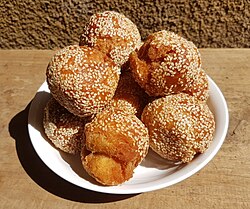
This is a list of notable sesame seed dishes and foods, which are prepared using sesame seed as a main ingredient. Sesame seed is a common ingredient in various cuisines, and is used whole in cooking for its rich, nutty flavor. It is also a potent allergen.


















